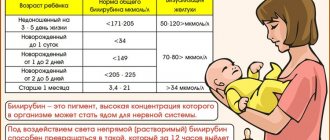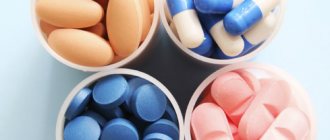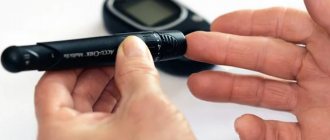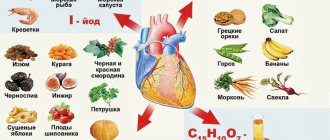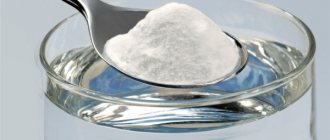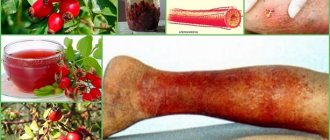“High cholesterol” does not hurt, but it can lead to the development of atherosclerosis. Atherosclerosis affects the cardiovascular system, leading to the formation of atherosclerotic plaques and blood supply disorders. This often ends in heart attacks and strokes.
Today there are many drugs from the statin group. They have been shown to be effective in reducing mortality from cardiovascular disease, but debate continues about their safety. To achieve and maintain the desired levels of lipid metabolism, long-term use of drugs is required, but many patients do not follow the recommendations, causing the effectiveness of treatment to sharply decrease. What to say about patients when doctors have different opinions on this matter.
Causes and symptoms
The level of creatinine in the blood is interrelated with the volume of muscle tissue and protein intake. The more protein food you have, the more protein you need to remove. If the percentage of muscle content does not change too often with increasing loads or sudden weight loss after dieting, then the creatinine content remains stable.
An increase in levels is called hypercreatininemia. It is manifested by muscle pain, frequent fatigue, swelling and a decrease (rarely an increase) in urine volume. Deviations from the norm cause:
- too frequent and heavy physical activity;
- non-compliance with the drinking regime (drinking liquid in small quantities);
- taking medications for muscle growth;
- depression of liver or kidney function.
In some cases, a “false” increase in level appears, which is not associated with health problems. This happens with excess weight, metabolic disorders, use of nephrotoxin drugs - antibiotics, diuretics, beta blockers, inhibitors, sulfonamides, immunoglobulins, etc.
Characteristics of creatinine
Creatinine is the final product of amino acid-protein metabolism in the body, which is formed during active contraction of muscle tissue. An increase in the level of this substance in the blood is primarily indicated by impaired excretory function of the kidneys, hormonal imbalances and muscle diseases.
As for the normal amount of creatinine that should be contained in human blood (µmol/l), its levels will depend on age, physical activity and diet.
Table of norms for children and adults
| Age | Normal (µmol/l) |
| Small children | 45-105 |
| pupils | 27-62 |
| men | 74-110 |
| women | 44-80 |
Elevated creatinine is very dangerous for the body. First of all, it signals deterioration of the kidneys, as well as the accumulation of waste and toxins in the blood. Moreover, if you do not take prompt measures to cleanse the blood, you also risk putting your liver at risk. In more advanced cases, heart and kidney failure, gastrointestinal disorders, skin problems and nervous system disorders may occur.
Creatinine norm - table
Based on age and the content of muscle mass in the body, normal indicators change. The highest values are acceptable for a healthy, active middle-aged man. In women, the numbers are slightly lower, but with the onset of pregnancy they decrease by 30-40%. After 40 years, the norm gradually decreases; with age, muscles become smaller, activity gradually decreases along with creatinine levels.
Table of creatinine content in blood (normal):
| Age and gender | Normal values (mmol/l.) |
| Infants (up to 30 days) | 12-48 |
| Children under 12 months | 20-55 |
| Teenagers under 15 years old | 25-88 |
| Men | 55-106 |
| Women | 43-97 |
| Pregnant women | 35-80 |
The numbers may be different; in order to accurately understand your condition, it is better to calculate the optimal level with your doctor, taking into account your weight, age and previous diseases. In people who are overweight and without one kidney, the indicators will be higher, but all this is discussed at the appointment and taken into account when diagnosing.
What is creatinine
This is a product produced as a result of amino acid-protein metabolism. It occurs when muscles contract frequently and actively. A violation of its level will be signaled by such problems with the body as failures in the excretory function of the kidneys, diseases of muscle tissue, and hormonal disruptions.
As for the optimal creatinine level, it will depend on many factors: the person’s age, the food he eats, his physical health, etc.
How to reduce creatinine in the blood with folk remedies
It is not at all necessary to immediately start taking pills; often traditional methods and a balanced diet will significantly improve the situation and help avoid complications during treatment. There are no harmless drugs; any intervention in the body with the help of chemicals can improve some indicators and worsen others. Even if it is no longer possible to do without medical intervention, herbal teas, leaves, and berries will help normalize a stable condition.
nettle leaves
In addition to the diuretic effect, nettle also has a general strengthening effect, and also has a laxative and expectorant effect. The decoction can be made only from nettle leaves, or you can also add calendula flowers and knotweed. For brewing, take all components in equal proportions and pour in 2 tbsp. mixture with one glass of boiling water. It’s good to do this in a thermos, then strain the infusion before drinking. It is enough to consume 0.5 glasses a day, drinking in small sips throughout the day.
Sage
Collection with sage and burdock roots, dandelion leaves and birch bark due to the content of lithospermate B in it helps the kidneys remove creatinine faster. For 1 cup of boiling water take 3 tbsp. l. All ingredients, mixed in equal parts, prepare a decoction, which is consumed after filtering. It is enough to drink 3 tbsp at night. l.
Lingonberry (leaves)
It is better to brew them for 30 minutes in a water bath. For one day it will be enough to pour 250 grams. boiling water 60 gr. leaves. After preparation, you need to give it time to cool and then drink 1/3 cup 3 times a day. In addition to lingonberries, they also add chamomile flowers, violet, motherwort, string, and dandelion. Mix everything in equal parts, drink no more than 200 grams. per day, divided into 3 parts.
Rose hip
They use both berries and leaves, add hawthorn leaves, dill seeds, bay leaves, and parsley root. To prepare, take 2 dessert spoons and pour 200 ml. boiling water The tea must be infused for at least 3 hours, it is better to leave it overnight, take 5 tbsp the next day. l. 7 times a day. Tea made from pomegranate peels and rose hips, mixed equally, also enhances the secretion of urine. To get the daily norm - 0.5 liters. water is poured into a thermos and left for about 30 minutes, consumed in small portions. Such decoctions also help maintain vitamin C levels.
Dandelion roots
Violet flowers, celandine, St. John's wort are also added to them, and 1 tbsp is mixed. l., boil in 0.5 l. water and leave for about 1 hour, wrapping it up to keep warm. After preparation, filter and drink three times a day 30 minutes before meals. To obtain results, you must continue taking it for at least 30 days.
Chamomile and mint
Chamomile flowers and mint are prepared in a steam bath, left for 40 minutes, and filtered. For daily intake, use 2 tsp. both components per 1 glass of cool water. Take 0.5 cups in the morning and evening.
Oak bark
There are several recipes that normalize creatinine levels. In the first case, take oak bark and bearberry in equal quantities (about 2 tablespoons of the mixture), pour 200 ml. water, bring to a boil over low heat, filter, divide the intake into several approaches, drinking 6 tbsp each time. l.
In the second option, in addition to oak, birch bark and buds are also added. Mix in equal proportions, separate 4 tbsp. l. and pour 1 liter. water. All this must be kept on low heat for at least 60 minutes, after which it is infused, cooled and filtered. Drink 0.5 cups up to 6 times a day.
Creatinine leaves along with urine, so the balance of water in the body must be constantly maintained. You should drink at least 1.5 liters of water, usually 30 ml. for every kilogram of weight. In this case, only pure water is considered without adding salt, sugar, heat treatment and other spices.
Contraindications
Herbal remedies are sometimes not so harmless, especially if taken regularly. Before introducing them into your diet, you need to learn about the characteristics of each component and monitor negative reactions as you consume them. Women need to be very careful when using sage; its use is dangerous for pregnant women (in any trimester it threatens the fetus), during breastfeeding, and with oncology of the uterus and breasts. It is also better for those with hypertension to refrain from using it, as their blood pressure may increase. Also, people with acute kidney inflammation are advised to choose other remedies. If in any doubt, it is better to refrain from untested methods and be sure to consult a specialist.
Contraindications
Particular care should be taken when taking sage. It is prohibited to use during pregnancy at any stage (it can cause miscarriage), it is not recommended for nursing mothers, or for breast and uterine cancer. This plant can also increase blood pressure, so it should be taken with caution by hypertensive patients. For acute inflammation of the kidneys, sage should be used only in consultation with your doctor.
Be extremely careful when using sage during pregnancy!
How to reduce creatinine with drugs
Reduced levels can be achieved with the help of medications. You should not prescribe medications yourself without supervision from a physician; any self-medication can result in serious consequences. Some tablets may, on the contrary, increase the creatinine content, so you should take this into account and carefully read the composition. For example, vanadium, ibuprofen, ACE inhibitors and cyclosporine provoke exacerbation when taken uncontrolled. Most often, doctors prescribe:
- Ketosteril (according to a doctor’s prescription, 2-8 tablets per day, 3 times a day with meals);
- Supplements with alpha-lipoic acid cleanse the blood of toxins and help maintain creatinine levels within normal limits (up to 300 mg per day);
- Chitosan - in addition to weight loss, it filters the blood (the dose is selected individually and ranges from 1 to 4 g per day);
- Lespeflan - only according to the regimen that is selected by the doctor, specifically taking into account your state of health.
How to eat healthy when you have high creatinine
If you decide to normalize the creatinine level in the blood at home without the help of doctors and nutritionists, you should know about a very important point - a properly selected diet. Its “base” is as follows:
- reducing the consumption of foods with protein content;
- abstaining from foods with salt and potassium.
Main!
If you want to lower your creatinine levels, then you should stop eating foods high in protein. Thus, these include all products of animal origin - they have the greatest effect on the production of creatinine. And if its level is already quite high, then there is a risk of even more harm to your body, which is not working properly. But you don’t have to completely forget about protein foods - you should include plant-based foods in your diet.
When there are illnesses affecting the functioning of the kidneys, it is worth reducing the intake of foods rich in potassium, because it is this microelement that tends to accumulate in the body. As a result, kidney function, which is responsible for removing potassium from the body, will be impaired and creatinine will increase.
Foods high in salt can cause fluid to accumulate in the body and increase pressure inside the blood vessels. Together, this will trigger an increase in creatinine levels. You need to choose low-salt dishes that will not cause even more harm to the body. So, the maximum daily dose of this substance should be no more than 4-5 grams. Anyone who is used to eating smoked, spicy, salty dishes will have to readjust.
An athlete needs to choose dietary supplements as carefully as possible, paying attention to their composition. After all, many of them contain creatinine - they should be completely excluded from the diet.
It is strictly forbidden to eat such dishes as:
- animal and poultry meat with high fat content;
- high fat fish;
- products made from yeast dough;
- smoked, fried, spicy dishes;
- various spices, salt and sugar.
You can eat, but in limited quantities:
- low fat meat. Moreover, you can eat it only in small portions and no more than twice a week;
- eggs. Maximum – 4-5 pieces for 7 days;
- fish.
Important!
Fish can only be eaten if it has been steamed, stewed or baked. But the varieties must be exclusively dietary.
What is recommended to use:
- any type of fresh fruit;
- boiled vegetables;
- various natural fruit drinks;
- compotes from berries and dried fruits;
- yoghurts, kefir, fermented baked milk, cottage cheese, cheese;
- butter, vegetable oil;
- boiled or steamed rice;
- porridges from various cereals;
- pasta products;
- black bread with flour base;
- filtered mineral water;
- honey;
- dishes cooked in a steamer;
- boiled or stewed dishes;
- casseroles;
- salads;
- cream soups;
- meatballs;
- jelly.
What to do to prevent creatinine from increasing
If research has revealed violations, then in addition to using tablets and decoctions, you should think about your lifestyle and diet. Most often, the appearance of such deviations indicates serious problems with the kidneys, so temporary measures will not be enough. Fluid control, moderate physical activity, diet correction - it’s best to make all this part of your daily routine and stick to it regularly. You can also add massage sessions, cold laser physiotherapy, warm baths or osmotherapy.
How to eat
A very effective method is to eat less foods containing animal protein. Such products force the kidneys to work harder, which negatively affects the amount of substances excreted. It is better not to eat vegetables and fruits high in potassium so that it does not accumulate in the body. Food containing phosphorus is difficult for weakened kidneys to process, so it is better to find out in advance where it is contained and reduce the amount of such products.
Athletes and those who regularly use nutritional supplements should review the composition of the medications they take and exclude those that contain vanadium and creatine.
| Product | Add to food | Reduce consumption | Exclude |
| Plant foods (berries, parsley, cauliflower) | + | ||
| Animal protein (red meat, dairy products) | + | ||
| Anything with a lot of phosphorus (pumpkin, zucchini, cheeses, fish, soybeans) | + | ||
| Anything with a lot of potassium (dried fruits, banana, spinach, potatoes) | + | ||
| Salt, sugar, chicken eggs | + | ||
| Pickles, preserves, ketchup, store-bought sauces | + | ||
| Coffee, strong tea | + | ||
| Sports nutrition containing creatine | + |
Some processed foods contain a lot of salt and additives that strain the kidneys. In order not to be at risk, you must carefully read the ingredients on the packages, summing up the amount you eat per day. Most buyers don’t even know what chips, crackers, sauces, and canned vegetables are made of.
Rice for breakfast
If you cook rice for breakfast for a month and eat it without salt and oil, then your creatinine level will gradually normalize. For the best effect, it is soaked overnight in cold water to swell, and only then boiled for breakfast. For a serving take 6 tbsp. spoons and pour water so that it covers it by two fingers.
Daily regime
To reduce critical indicators and reduce the load on the kidneys, it is better to review your daily routine and stick to it regularly. First of all, it is necessary to maintain water balance and drink clean water in the required quantities throughout the day. Choose the level of physical activity so that it is not too high, but allows you to maintain muscle tone. You may have to replace exhausting running and dumbbells with yoga and walking. It is very important to get enough sleep at night; this will require at least 8-9 hours. Walks in parks and forests should also be included in your daily routine if until now you have devoted little time to this. Increased levels of stress and emotional distress provoke deviations from the norm; to correct this, you should constantly devote time to relaxing and reviewing your reactions to life events.
Proper nutrition will reduce risks
One of the most important points in normalizing creatinine levels at home is diet therapy. Its basic rules are as follows:
- restriction of protein foods;
- reducing salt and potassium in the diet.
Avoid foods high in protein. First of all, this concerns animal products - they are the main source of dietary creatinine. With elevated levels of this substance, such products can be harmful to your body. However, remember that you cannot completely eliminate protein from your diet, so try to compensate for its deficiency with protein of plant origin.
If you have kidney problems, you should also limit your intake of potassium, since this trace element can accumulate in the body, and the excretory system simply cannot remove it in the required quantities.
Salt is known to promote fluid retention and increase blood pressure in the body. These factors lead to an increase in creatinine. Therefore, it is necessary to select foods with the lowest possible salt content so that its maximum daily intake does not exceed 2-3 g.
Lovers of salty, spicy and smoked foods will have to tighten their belts!
We recommend that athletes pay special attention to the composition of the dietary supplements they take. Many of them contain creatinine. It is better to exclude such additives.
It is recommended to completely exclude from your diet:
- fatty meat and poultry;
- fatty fish;
- milk with a high percentage of fat content;
- bakery products made from yeast dough;
- fried foods;
- smoked meats;
- spicy dishes;
- spices, sugar and salt.
Reduce consumption or eliminate from diet (photo)
Salt
Sugar
Spices
Spicy dishes
Smoked meats
Fried foods
Pies with yeast dough
Full fat milk
Fatty fish
Fat meat
Limit your food intake:
- dietary meat. You can make meat days separately, no more than 2 times a week, including it in larger quantities in dishes;
- chicken eggs - up to two or three per week;
- fish.
Authorized and recommended products:
- boiled vegetables, fresh fruits - in unlimited quantities;
- fruit drinks, compotes, berries;
- dried fruits and nuts (excluded only in case of renal failure);
- yogurt, kefir, fermented baked milk, cream cheese;
- vegetable oil;
- porridge and cereals, especially rice;
- pasta and bread based on wholemeal flour;
- purified and mineral water;
- honey;
- steamed dishes, stewed, boiled, mashed potatoes, cream soups, salads, casseroles, meatballs, jelly.
Sartans and modern views on nephroprotection.
Oksana Mikhailovna Drapkina , professor, doctor of medical sciences:
– Dear colleagues, dear friends, hello! We are starting our XXXV anniversary Internet session. This is the 35th time we are going on air, communicating with you, and getting the results of the communication. I want to say that, as usual, a very interesting program awaits you, which is posted on the website. You can watch who will perform. We are waiting for your questions because we are always working on feedback. You can call us, write to chat, email. Now all the necessary information is on your screen, please write down this information. We welcome your questions, comments, agreements or disagreements.
Today our session is opened by Professor Grigory Pavlovich Arutyunov. Grigory Pavlovich will tell us about sartans and modern views on nephroprotection. Please, Grigory Pavlovich.
Grigory Pavlovich Arutyunov , professor:
- Thanks a lot. I welcome everyone who joined the online session at this early hour. Let's talk today about how to protect your kidney. To know how to protect the kidney, let's try to evaluate what happens to each of us when the kidney becomes involved in the pathological process.
It must be firmly remembered that the red line is the main methodological approach to understanding the cardiac patient. This is a continuous series of events called the cardiac continuum. It begins during the period of intrauterine development, when any event suffered by a pregnant woman: smoking or a viral infection changes the endothelium, and the atherosclerotic process begins to develop. In parallel with the development of the plaque, a number of other organs are affected. Pay attention to the red rectangles at the base of the pyramid - absolutely identical risk factors: metabolic syndrome, smoking, high cholesterol, high low-density lipoprotein levels. But there are two parallel sides of the pyramid - on the one hand, coronary heart disease develops, and on the other hand, there is continuous damage to the kidney from the development of hypertension inside the glomerulus to the appearance of small doses of albumin, a decrease in the glomerular filtration rate.
Thus, in essence, it must be said that absolutely any patient with cardiac pathology has kidney pathology. Who is the main conductor in this process? This is angiotensin II. There is no need to determine the true level of angiotensin II, it is already elevated. We need to remember what he does. First. It increases the synthesis or activity of vasopressin. This means that the volume of circulating blood in absolutely all these patients is changed towards an increase. It changes the level of aldosterone activity and causes fibroblasts to deposit collagen, including in the kidney, which shortens the lifespan of the glomerulus. It activates the sympathetic nervous system. There is mutual influence here. This means that a greater number of heart contractions appears, the smooth flow of plasma through the kidney is disrupted, and the kidney is damaged.
Today, here is the most important structure for the synthesis of angiotensin II. It is generally accepted on a global scale. Let's take a look at it. Where does the pathological process in the kidney start? Angiotensin, an agent synthesized in the liver, meets rhinitis released from the juxtaglomerular apparatus of the kidney, angiotensin II is formed, which is then converted to angiotensin II under the action of angiotensin-converting enzyme. The most important thing is that angiotensin II will bind to AT1 receptors, which determine several processes in the human body. The first thing that will happen is that the smooth muscle cells will hypertrophy, but angiotensin II will cause sodium retention in the ascending limb of the loop of Henle, which will cause an increase in circulating blood volume, and it will primarily cause spasm of the afferent artery, which will lead to the development of intraglomerular hypertension.
Thus, a doctor looking at a cardiac patient must remember that the glomerulus has changed in this patient, a situation has arisen in it that has led to an increase in pressure.
Why are we concerned today about the chemicals that are highlighted in lilac on this slide? Because chymases can convert angiotensinogen to angiotensin II, bypassing the help of angiotensin-converting enzyme. This means that the kidney very quickly becomes an organ that synthesizes its own angiotensin II.
So, if angiotensin II is synthesized, then it necessarily binds to AT1 receptors, the kidney begins to return sodium and water in large quantities, angiotensin II causes a spasm of the arteries, primarily the carrying artery, which radically rearranges the functioning of the glomerulus itself. For an hour, the therapist does not think that the huge number of drugs he uses interfere with the functioning of the reninangiotensin sterone system.
Today we are not talking about beta blockers, which reduce the release of renin from the juxtaglomerular apparatus, nor about spirolactones and mineralocorticoid receptor blockers, which block collagen deposition, including in the kidney itself. We are talking today about angiotensin II receptor antagonists, sartans. That is, of the six classes of drugs that affect the reninangiotensin sterone system, we are talking today about one - the drugs sartans, which block this work. To understand what we influence, let's look at what happens in the kidney several years after the onset of cardiovascular disease.
The first thing in front of you is a lifetime kidney biopsy. This is what the kidney looks like at the onset of arterial hypertension. Look. So in six to eight years. So in ten to eleven years. So after 14 years. Instead of a glomerulus, only a sclerotically changed area of the kidney remains.
Thus, the first process that proceeds inexorably is the development of fibrosis of the kidney itself. The second process is very important for the therapist, and this is where he intervenes very quickly. Pay attention to the number 5 and 1. Number 1 is the afferent artery. Its diameter is exactly twice as wide as the diameter of the afferent artery (number 5). This means that the blood that has passed into the glomerulus encounters slight resistance to leave the glomerulus, and this pressure gradient, which occurs on the narrower afferent artery, is sufficient for urine to begin to be filtered.
What is urine filtered through? You see a thin layer of white cells - these are podocyte stalks surrounding the glomerulus. Podocyte feet have an electrical charge. Imagine a patient with high levels of angiotensin II, he compressed the artery. This means that the blood came through artery 1, but cannot or has difficulty leaving through the entraining artery, which means that the glomerular loops are filled with blood. These overfilled loops begin to put pressure on the podocyte feet, modifying the electrostatic charge, and the electrostatic charge is equal to the charge of the albumin molecule.
Look how delicately everything is arranged. The charge drops, albumin ceases to be repelled and falls into the primary urine in large quantities. The therapist will detect this process by the definition of microalbuminuria (albeit an outdated term now), by small doses of albumin or low-grade albumin in the urine. Thus, the appearance of albumin in the urine for the therapist means that there is very high pressure in the glomerulus. This was the second process from which it was necessary to protect.
The third process is excess blood flow through the kidney. If one glomerulus dies, then the blood that should have come to this glomerulus ends up in the adjacent glomeruli; they are not ready to accept such blood flow.
Finally, one of the most terrible events is that if the angiotensin II carrying artery is compressed, this means that less blood enters the tubulointerstitial tissue. How will the therapist see tubulointerstitial tissue ischemia? If there is ischemia, then there is an uncontrolled return of sodium. Uncontrolled sodium return is a modification of the rigidity of the vascular wall. This means that the nighttime pressure profile in these people tends to change. They go from dippers to non-dippers or even nightpickers.
These simple observations of life and measuring blood pressure in their patients allow therapists to tell how the kidney has changed. Local ischemia undoubtedly has a very negative impact on the patient’s life, because the process of sclerosis of the second structure of the kidney—tubulointerstitial tissue—begins. Finally, all this ends in absolute oligonephronia. Oligonephronia means a decrease in the number of glomeruli.
Let me remind you that every person is born with approximately a million glomeruli in each kidney. If the weight at birth is as expected, then this is true, but if the weight is a kilogram less, he loses approximately 250,000 glomeruli. Thus, when collecting anamnesis, the therapist must already guess which kidney his patient initially has, and how quickly he needs to intervene. After all, a smaller number of nephrons suggests a completely early process of inclusion of the kidney in this pathological process.
So, we firmly understand that angiotensin II, which comes from the outside, angiotensin II, which is synthesized directly in the kidney, forever modifies the functioning of the glomerulus, tubulointerstitial tissue, and forever increases the return of sodium to the body. This means that the pressure itself changes in our patients.
Look at the red lines. The red lines are collagen that has been deposited in the glomerulus. This glomerulus is doomed, but instead of the dead glomerulus a new one will not grow, there will be connective tissue there, and the blood that should have come to this glomerulus will flow around the glomerulus and enter other glomeruli, creating hyperfiltration there, leading to the rapid death of these glomeruli.
So, we have decided on the most important pathological things. How will the therapist see all this? He should look for some changes. The most important change that a therapist will see when analyzing his patient’s kidney is a decrease in glomerular filtration rate.
Here are several formulas that any therapist should know. They allow you to calculate the glomerular filtration rate directly at the appointment. Before us is the Cockcroft–Gault formula. Despite all its conventionality, it allows one to know the glomerular filtration rate in real clinical practice. Here is the MDRD formula, which stands for “modified kidney disease diet.” In this large study, this formula was derived. It requires a calculator, but it will allow the doctor, especially the therapist, to figure out how far the changes in the kidney have gone.
One of the most accurate formulas today is a formula called chronic kidney disease. A collaboration of epidemiologists that developed this formula, requiring knowledge of creatinine levels to calculate it. Pay attention to the unit of measurement. Here creatinine is measured in milligrams per deciliter. In Russia, another unit of measurement is adopted - micromol per liter. We must remember that one milligram is 88.6 micromol per liter. This will allow you to easily calculate the glomerular filtration rate for each patient.
Let's look at a modern analysis of how the kidney loses protein. We abandon the concept of “microalbuminuria”, since microalbuminuria starts at 30 mg per 24 hours. You can clearly see that the optimal level is less than 10 mg in 24 hours. Microalbuminuria, which we talked about then, is insignificant doses, in fact it is a high level of protein being lost. The therapist will be able to understand very early that his patient has a changed kidney.
Look, a changed kidney begins for a therapist in his professional consciousness with a glomerular filtration rate below 60. We must remember the great doctors of the world who walked towards this understanding. Undoubtedly, this is Bright. Doctors of the older generation remember this name when they said Bright's disease instead of glomerulonephritis. It was Bright who first described changes in the kidney associated with changes in the heart.
This is the great Russian doctor Tingerstedt. He was the first in the world to discover renin and describe subsequent events. This is the great American doctor Franz Volhard, who introduced the concept of target organs. The kidney was the first to be described by him as an organ that changes the glomeruli.
Of course, these are outstanding Soviet doctors who left their mark on the world. First of all, Evgeny Mikhailovich Toreev, who described the stages of kidney changes in these processes. I want us to feel that pride that allows us to have special respect for Russian clinical thought, which developed the concept of kidney change.
How do we relate kidney change in the context of cardiovascular disease today? First of all, we say that there are two special connections for the therapist. Any chronic cardiac pathology modifies the condition of the kidney. Any chronic kidney pathology modifies the state of the myocardium.
Understanding what happened, let's look at where and at what stages sartana is included in this process. Let me remind you that sartans block AT1 receptors. This means that they don’t care where angiotensin II came from - it was synthesized by chymases or angiotensin-converting enzyme on the receptor that perceives it - angiotensin II is blocked. We must treat all sartans with respect. All sartans have undergone major studies. Therefore, it is unacceptable for a therapist to say good or bad sartan. Let's look at the niches where these sartans were tested.
The first study that was historically performed was the losartan study. These were patients with severe kidney damage and diabetes mellitus. They had high levels of creatinine, high levels of lost albumin. Losartan has proven its ability to block the rate of doubling of creatinine levels - the most important parameter for a therapist. He must consider the rate at which the level of creatinine in the blood increases, and when it approaches a factor of two, this is an extremely negative prognosis. And it has been proven in renaal studies to slow down or reduce the amount of protein lost. This means that at the last stages, during pronounced changes in the kidney, losartan has proven its effectiveness.
Look at the drug "Irbesartan", which has proven its dose-dependent effect in the early stages of the disease (...) (00:14:51) and in the later stages of the disease it has proven its superiority over the calcium antagonist in protecting the kidney, but most importantly, it has proven its effect in the early and late stages of treatment of kidney pathology. It is very important for us that almost all sartans have proven this effect. We know that it is possible to combine sartan and an ACE inhibitor. This has been proven in studies by Caln. There, candesartan was combined with lisinopril and showed a greater reduction in the level of lost protein. This is not a very common technology today.
As a rule, it is believed that if your patient has more than a gram of protein, and you cannot adequately reduce the level of protein lost on monotherapy, you can combine this process. But the most important thing for us is that all sartans, I’m talking about the last one, are valsartan, which has proven its effect in the initial stages, not even sartan, but simply the diuretic drug “Indapamide” has proven its effectiveness in patients with diabetes, reducing the amount of protein lost.
It is very important for us to understand that behind all this there is a question: who is more effective? Calcium antagonists or sartans? Sartans. Who is more effective: inhibitors or sartans? They have proven to be equally influential. What do we know for sure? For us, the most important parameter is the level of the number of patients with adequate average pressure achieved.
Look at the MDRD study, it answered a key question for the therapist: what target pressure should be maintained to reduce the amount of protein lost. You see very well in these patients that strict control and not very strict control have shown that you are under strict control, but without going too far, I ask you to hear this word, without lowering the pressure excessively, you reduce the amount of protein lost in your patients. So, to date, all sartans have proven their effectiveness in patients with the disease.
Let's look at the stage before the development of the disease. And here only one sartan has undergone clinical trials to date. This is the stage when there is no microalbuminuria yet. The stage in which the therapist can ask the question: I have diabetes mellitus, but no microalbuminuria, can I apply technology that will slow down the process of occurrence (an almost obligatory process) of microalbuminuria? For such a technology, for such a formulation of the question, the ROADMAP study was created at one time and olmesartan, which, unfortunately, is little known in our country, passed this clinical trial.
Let's remember the basic things that have been accumulated in these studies. First, the concept of basic drugs was introduced in patients with low glomerular velocity - chronic kidney disease. For three months the rate is below 60 – you have the right to think about chronic kidney disease. We know for sure: ACE inhibitors or sartans should be prescribed to such patients even with normal blood pressure, if their level of albumin loss is higher than 30 mg per 24 hours.
Second approach. We must firmly remember that if the rate is below 60, sartans or inhibitors are the drugs of choice, because they are the main therapy in the treatment of such patients.
Let's say the most important thing. Losartan reduced the doubling level of creatinine and reduced the level of lost protein. Valsartan turned out to be highly effective in the initial stages and outperformed the calcium antagonist. For us, irbesartan turned out to be effective at the beginning and end of the disease, reducing the amount of protein released, and proved especially important in the terminal stages of the disease.
Let me draw attention to the drug olmesartan, which is unfortunately little known in Russia. Olmesartan came into medicine, into the clinic of internal medicine, in its comparison with ACE inhibitors in elderly patients. Let's remember the peculiarity of the vascular bed in elderly patients. These are people with a very high tone of the peripheral arteries, with a high speed of pulse wave movement. Olmesartan titrated (note the second keyword “titrated”) from 10 mg to 40 mg was very effective in older people because it lowered blood pressure, and most importantly, at night, preventing older people from increasing blood pressure in the early morning hours , which is considered today as a very dangerous moment - a precursor to a possible cerebral hemorrhage or sudden death. And first of all, it has proven its effectiveness on altered vascular walls, the ability to achieve the target pressure in a large percentage of cases.
For us, the most important issue is the speed of reaching target blood pressure levels. Almost the absolute majority of patients reached this stage in the range of 8–12 weeks. Thus, we are talking about the effective effect of olmesartan, sartan on the vascular bed with an initially altered morphological structure.
Going back to the ROADMAP study, we understand that the drug that was used in this study had a very good testing base prior to this study, and we knew that it was a powerful antihypertensive drug. The ROADMAP study has grown into a huge number of stories and rumors. Let's understand this study without emotion. Approximately 4,500 patients are included in this study. These are patients who have diabetes mellitus, from 19 European countries, but they do not have the most important thing - these patients do not now have microalbuminuria and they have a good glomerular filtration rate, which is clearly above 60, they have 85 ml per minute. So, patients with diabetes before the development of diabetic nephropathy, before the development of an altered glomerulus, before the development and appearance of microalbuminuria are included in this study.
Please note the key point, I have spoken several times today about the need to titrate olmesartan. The study I talked about about the hypotensive effect was titrated there, but not titrated here. And this is probably one of the main mistakes in this study. Forty milligrams of olmesartan was prescribed as a base, starting dosage. So, forty milligrams of olmesartan in patients with diabetes mellitus without microalbuminuria versus the same basic therapy that they receive in this line of research, just a placebo in relation to olmesartan. What was the goal?
Let's measure the time it takes on olmesartan therapy before microalbuminuria develops. If we can slow down this time and lengthen it, then we can say for sure that the drug definitely acts as a nephroprotector. Let's say the most important thing, on top of the basic treatment, all patients with diabetes receive 40 mg at once. And finally look at the purple part of the slide. What is the target level stated in this study? Less than 130/80 mm Hg. Art. I ask your attention especially to the blood pressure numbers. This is the most important parameter in this study.
So, this research begins, and the primary point (I emphasize again) for the first time in history was proclaimed: “We are treating patients without the disease, we are trying to delay the onset of the disease - the appearance of microalbuminuria.” Look at the top line, it shows the number of patients with coronary heart disease. It would seem like a one percent difference, but one percent when the study included 4,500 patients is a big number. Unfortunately, as a result of special randomization, the number of patients was one percent greater in the olmesartan group than in the placebo group.
Now look at the main result of the study. It was possible to significantly reduce the onset of microalbuminuria. This is a very important question. The time to onset of microalbuminuria differed from the placebo group by 23%. This is a very important success for us. We understand that we now have a drug in our arsenal that can prevent the development of the disease. Placebo and olmesartan can be read on this graph. The olmesartan curve is significantly lower than the placebo curve. This means that we have slowed down the process of kidney destruction. So, we got the most important answer in this study. We have proven that the use of olmesartan leads to a slowdown in changes in the structure of the kidney, slowing down the time when the changed glomerulus will accurately manifest its pathological activity by loss of protein. So, we extended that bright period of the patient’s life, which passed without microalbuminuria.
Experts came to the conclusion that today we can say with all confidence and responsibility: olmesartan is currently the only sartan that, from the point of view of evidence-based medicine, has proven its effectiveness as a true nephroprotective drug. I will emphasize that the sartans used before also proved their nephroprotection, but they worked at the “disease” stage, and olmesartan worked at the “pre-protein loss” stage, “pre-disease” in fact.
Let's get back to the tricky side of this study. These are pressure levels. You can see very clearly that the systolic and diastolic pressures differed between the groups, and they differed significantly. This difference resulted in three millimeters for systolic and two millimeters for diastolic pressure. More than 80% of patients lowered their blood pressure below 130/80. Now look at the results. The main thing we find is that overall mortality is similar in the two groups. Cardiovascular mortality is the same. But there is a difference that the vast majority of people have focused on. Let's understand it, it taught us a lot.
So, going into the differences between groups, let’s focus on the main thing that unites them. The groups did not differ in terms of all-cause mortality and cardiovascular mortality, but they did differ in the number of fatal myocardial infarctions that occurred in these groups. Note 11 events compared to one in the placebo group. Why might this happen? This requires explanation, and it teaches the therapist great attention to blood pressure levels. The first thing we will say is that there were more patients with coronary heart disease. A pressure drop lower than 130/80 is not best for these patients. Second. We draw the therapists' attention to the target pressure level. If you lower your blood pressure below 130/80, especially below 120, you need to understand that this is not the best thing you can do for your patients who have significant coronary artery disease.
So, the ROADMAP study showed us olmesartan - a powerful antihypertensive drug that requires careful treatment, requiring mandatory titration and monitoring of blood pressure levels by a therapist. Reducing blood pressure may worsen the course of the disease in patients with underlying coronary heart disease, but with all this we must remember that this is the only sartan that has proven effective in preventing further kidney destruction and the appearance of microalbuminuria.
I draw your attention to this curve of yellow bars. You see that at a pressure of 160 and at a pressure lower than 120, the amplitude of the yellow bars is approximately the same. This means for the therapist to be overly attentive to the level of blood pressure that he creates in his patient. A pressure drop lower than 120 will have an extremely negative impact on the course of coronary heart disease in cases of severe coronary heart disease in your patients. Therefore, remembering the power of the drug, remember also about safety.
The experts' explanation today for why this ratio of death from myocardial infarction was so different between the placebo group was not the purpose of the study at all, it was an incidental finding in this study. In the placebo group and in the main drug group, the main explanation was the lack of physician control over the blood pressure levels in these patients.
I would like to draw your attention to a purely therapeutic approach to the management of such patients. When you have selected a patient for sartan treatment and started sartan therapy, the therapist must remember that the effect of sartan depends on the amount of salt his patient eats, so he controls the food diary as a therapist, he controls what his patient eats. If the rate is lower than 30, he controls the amount of protein eaten, because more protein causes hyperfiltration and impairs glomerular function, so he calculates the diet.
This is a separate lecture on the amount of protein at 0.6–0.8 grams of protein per kilogram of weight. Imagine that a patient weighing 60 kg must eat 36 grams of protein per day. Let every therapist now ask himself a question: does he know how to calculate such a diet? Will he not speak general words to his patient or his wife, who will be in very difficult conditions? But he must control the amount of protein eaten, the amount of salt eaten.
The third aspect that he must monitor throughout his patients is the dose of the starting drug. You see in the column farthest away from you, with a glomerular filtration rate of 10 to 30 ml per minute per 1.73 m2 (this is the area of our body), control of the starting dose is required in several situations. For candesartan, the dose is reduced by half; for olmesartan, the dose in these situations should be reduced, at least titration should begin with a dose of 10 mg, which will avoid negative aspects.
So, knowledge of three auxiliary things: salt, protein and starting dose - allows us to make therapy with sartans highly effective, lasting as long as possible in our patients and the most effective nephroprotective aspect of treatment. Thank you for your attention.
